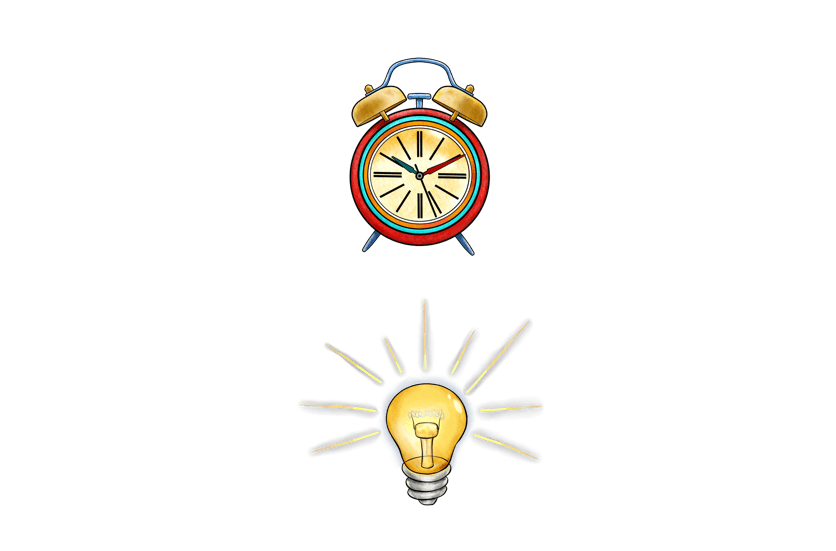
What’s the most effective way to communicate in a remote environment? It’s a question the world has been collectively asking itself over the past few months.
At Yarno, our MD Lachy was slightly ahead on asking that question, adding “Review how we communicate with each other at Yarno” to a list of internal projects on January 17th 2020.
Whether it was witchcraft, tea leaves, or the result of some niggling issues we were already feeling (HINT: it was this one), it prepared us to think about a whole new way of working.
To help us review how we communicate with one another, we garnered the independent advice of the UTS Consulting Club. You just can’t see yourself clearly, so we brought in the outside perspective of six bright young students to look us up and down, and tell us what’s what. We engaged them as an unbiased party to provide recommendations that we could integrate into our daily Yarno workings.
For anyone who’s been following our MD, Lachy, on LinkedIn, you’ll know that communication isn’t a problem endemic to Yarno, but rather, something integral to the success of remote work. So, while for the rest of this piece I’ll be talking about Yarno’s experience, it’s something that, due to the workforce-cataclysm that is COVID, is relevant to everyone who has a job.
Our communication review consisted of four phases: context, problem breakdown, research and validation, and solution. Let’s begin at the beginning:
Phase 1 - Context
2020 has not been kind to plans. Whether it was your international holiday or just the idea of eating in at a restaurant in March or April, plans have been thrown out the window. But that doesn’t mean that plans aren’t worth making. In fact, structured and considered thinking is more important than ever when looking towards an uncertain future. So in order to codify the problem for both ourselves and the consulting club, we put together a formal brief of the project, defining:
- Who’d be involved - which was all Yarnoers
- The problem we were trying to solve - in this case, how to communicate effectively
- The symptoms of our current challenges - a list which included: Slack (a workplace communication app) not being able to show what is urgent vs important; The context of a message being missed in written comms; andPeople having unclear expectations when messaging on different platforms.
- The impacts of these symptoms - costs in time, productivity and stress
- How we currently try to solve the problem - the tools we use and how we use them
- What success looks like - which for us came down to 3 things:A reduction in the time spent messaging on tools like SlackClear expectations for Yarno-ers on how to use tools and whenYarno-ers being able to work asynchronously
Phase 1 complete - we had a high-level understanding of our problem, onto Phase 2.
Phase 2 - Problem Breakdown
When you think you’ve defined a problem, there is another important step. Breaking it down. Which, in our case meant more surveys and further auditing.
Yarno-er surveys
Yarno-ers were asked to fill out two surveys to help define:
- their requirements for working productively in terms of days and environment,
- which tools they would go to for completing certain tasks,
- how valuable certain tools were to their day-to-day
- their challenges and struggles while working remotely
- what has changed about Yarno’s culture (if anything) as we moved fully remote
Some really positive themes emerged from working from home, like Yarno-ers being able to spend more time with family and 90% of Yarno-ers feeling as productive if not more productive in a WFH environment.
Despite that, we definitely missed getting Marlies (delicious Asian American fusion in North Sydney that we really hope can survive the lockdown) and water-cooler chat. But we also uncovered a large and fundamental issue that we had suspected - people had unclear expectations around communication. For example, this was our most varied response on what tool a Yarno-er would use to complete a task:

Oh, dear. We had 6 different tools mentioned and there was duplication between ways of recording processes - it might live in two different types of notes, our internal Learning Library or a Pages document and then we might notify someone on Asana and/or Slack.

Auditing our existing tools, in particular, Slack
To understand how we were using our tools from an analytical and functional perspective, we used Slack’s dashboards alongside a Yarno-wide audit of slack channels to review our core communications platform.
Our digging into the problem revealed one core issue: Yarno-ers had unclear expectations around communication, in both the tool to use and the expectations of the content and response of that communication.
In the brief, Lachy described our issue like this:
“In four years the team’s grown from two to twelve people. The number of tools we use day to day has grown. And our customer base has grown too. Yet we haven’t reviewed how we communicate and more importantly how we want to communicate with each other in 2020. Here’s our chance!”
Phase 3 - Research and Validation
We certainly aren’t unique in being challenged by remote work, so we thought we’d see what we could learn from others.
In particular, we’ve loved resources like:
- Buffer’s 10 Slack Agreements
- GitLab’s Remote Communication Handbook
- Basecamp’s Employee Handbook
- Know Your Team’s - Guide to Managing Remote Teams
- Twist’s Remote Work Guides
- InvertPro's Ultimate Guide to Remote Work
We’ve also been closely following larger companies like Atlassian, who much like us, saw themselves shift from a hybrid model to fully remote in a matter of days, providing plenty of lessons along the way.
If you’re a Yarno customer, you’ve likely also had a chat with at least one of our customer-facing Yarno-ers about how you’re navigating the uncertainty and working arrangements of 2020 and the lessons you’ve learned.
The UTS Consulting Club also did research into ways that the tools could be better utilised, for example by adding extensions like Must Read to help filter through the noise to find the signal in Slack.
I don’t know if we’ll ever truly leave the research phase. We’re an organisation that is on a mission to ‘Level Up’ and I truly believe we’ll always be looking to get some little wins and improvements as we move Ever Forward into whatever “normal” is now. But an initial solution has begun to take shape. So finally, we had the big reveal:
Phase 4 - Solution
Training on a Yarno-er Communications Handbook
When the UTS Consulting Club proposed their solution:

It looked like Yarno needed some Yarno. In fact, unbeknownst to the consulting club, we use that exact flow with our own customers in this new remote world:

As a company focused on learning with a bespoke content repository like the Learning Library, we’re uniquely placed to be able to train our own internal team on Yarno-er expectations defined in a Yarno-er communications handbook. There are some hugely successful companies who have been fully remote for years and this seems to be a successful method in getting everyone aligned. The bonus is, we can have fun (and get a little competitive) while embedding this behaviour change using Yarno.
Conclusion: how we communicate in a remote world
As I said, I think we’ll always be working to refine our Phase 3, with research, iteration and incremental improvements in our solution.
What we’ve learnt is that it’s not just what you communicate, but how. If you’re looking to review how you communicate at your organisation, our co-founder Lachy has created many articles dealing with best remote work practices:
- Do you suffer from inconsistent messaging to remote teams?
- Working remotely is more about trust than technology
- How decision inequality sets flexible work up to fail
If you’ve been through something similar or have learnings you could share from the shift to being remote, we’d love to hear from you. Give us a buzz anytime, we’re very chatty.





































